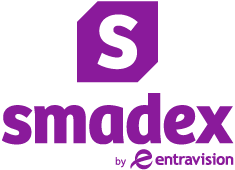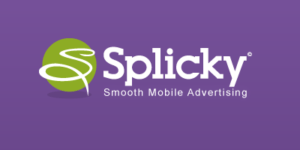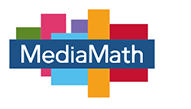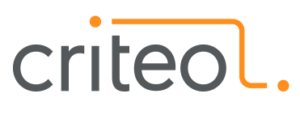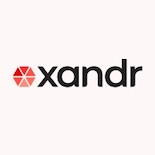Demand-side platforms (DSPs) play a crucial role in modern digital advertising by enabling advertisers to automate the purchasing of ad space across a variety of channels.
By leveraging demand-side platforms, marketers can target their audiences more efficiently, using real-time bidding and data-driven insights to optimize ad placements. These platforms have transformed how advertisers approach online marketing, making the process faster, more cost-effective, and scalable.
As demand-side platforms continue to evolve, they offer increasingly sophisticated tools for audience segmentation, helping brands reach the right consumers at the right time.
Marketers are able to invest their time and energy into more valuable areas of their businesses, and leave it up to demand-side platforms and marketing automations to retrieve the best ad bids within 0.1 milliseconds.
In this guide we lay out the advantages of implementing DSP advertising and suggest the top demand-side platforms out there that will take your ad campaigns to the next level so that you can focus on your business’ big break.
What is a demand-side platform (DSP)?
A demand-side platform is a web server based software system that allows brands, agencies and app developers that buy advertising inventory from publishers to manage multiple ad exchange and data exchange accounts, all through a single unified interface.
Dive into the world of DSP Buyer’s Guide with our expert guide, designed to help you navigate the complexities of programmatic advertising.DSP Buyer's Guide
Essentially, with a DSP advertising solution, advertisers can bid on ads (e.g. banners, video, native and other types of formats) and optimize ad performance based on effective key performance indicators (KPIs), such as effective Cost Per Clicks (eCPC) and effective Cost Per Miles (eCPM).
However, demand-side platforms do not work completely on their own and the system that it operates in can be slightly more complicated, especially when you are fairly new to the game of programmatic advertising and marketing automation.
The best demand-side platforms
A demand-side platform is a software platform used by advertisers and agencies to buy digital ad inventory programmatically. It allows advertisers to manage, purchase, and optimize online ad campaigns across various networks from a single interface.
We’ve listed the best demand side platforms below.
1. Mobupps
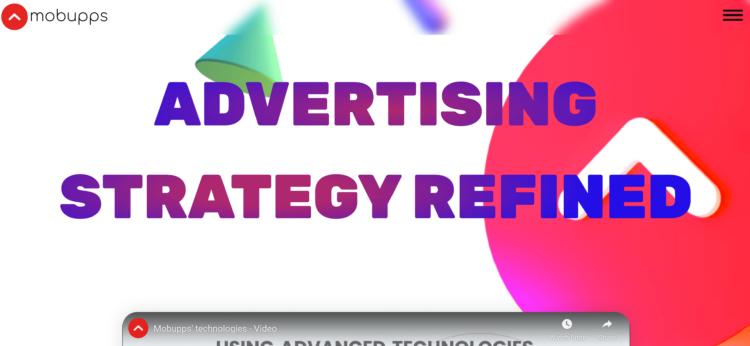
Mobupps is a mobile advertising company that provides programmatic solutions for advertisers, agencies, and app developers. The company operates as a demand-side platform, focusing on mobile ad campaigns through programmatic advertising and user acquisition.
The platform enables advertisers to buy ad inventory and optimize campaigns across various mobile channels, including apps and mobile web, ensuring targeted and effective ad delivery.
Overview
Mobupps was founded in 2012 by Shai Shahar and Amir Mikay. The company has since grown into a worldwide player in mobile advertising, providing programmatic solutions for advertisers and publishers.
Both founders brought extensive experience in digital marketing and technology to build a platform focused on performance-based advertising.
Services
Mobupps provides its customers with the following services:
- Helps businesses acquire new users for their mobile apps through targeted advertising
- Offers user acquisition strategies focused on driving app downloads, installs, and in-app engagements
- The platform is performance-driven, meaning advertisers only pay for specific outcomes, like app installs, actions, or conversions, ensuring better ROI
2. Verve

Verve is a location-based mobile ad and marketing platform that specializes in using geolocation data to deliver targeted and intelligent ads to mobile users. By leveraging real-time location data, the platform helps brands reach audiences based on location.
Verve uses what’s known as geofencing and beacon technology to deliver hyper-targeted ads to users. For instance, if a user is near a specific store or event, they may receive a relevant ad on their mobile device.
Overview
Verve was founded in 2005 by Tom Kenney. Over time, the company expanded its capabilities through acquisitions. For instance, in 2019, Verve was acquired by Mediapost, which shifted the company to a new direction focused on location data advertising.
Verve eventually evolved into Verve Group, expanding its offerings to include more comprehensive solutions in programmatic advertising, mobile in-app ads, and connected TV ads.
Services
Verve provides its customers with the following services:
- Operates as a programmatic ad platform, automating the buying of digital ad space and optimizing ad delivery to target users at the right time and place
- Offers precise targeting options that combine location data with other user attributes, such as demographics, shopping habits, and behavior patterns
- Delivers real-time analytics and reporting to help advertisers measure the effectiveness of their campaigns
3. Adikteev
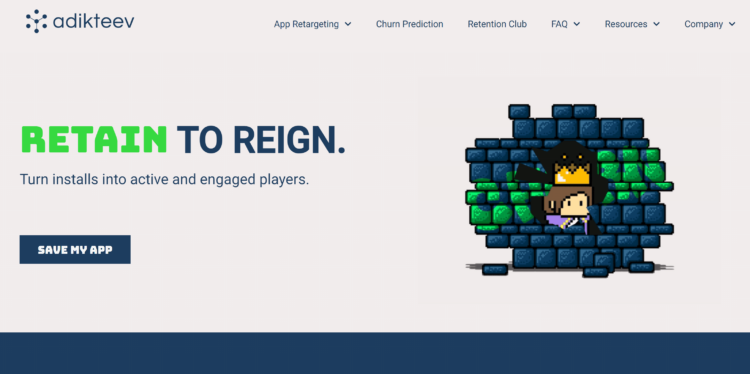
Adikteev is a mobile app marketing platform that specializes in app re-engagement and retargeting. The platform helps app developers and marketers re-engage users who have already installed their apps, with the goal of driving in-app activity and improving user retention.
Adikteev focuses on increasing user lifetime value (known as LTV) by delivering personalized ads that bring users back to the app, encouraging them to complete specific actions such as purchases or other key events.
Overview
Adikteev was founded in 2012. The company is based in Paris and has additional offices in the U.S. (and Europe). Adikteev has acquired several companies to expand its offerings, including Trademob and Motionlead, to boost its retargeting and rich media capabilities.
The platform has been recognized as a leading platform in app retargeting and user re-engagement, ranking high in industry reports for delivering successful app marketing campaigns.
Services
Adikteev provides its customers with the following services:
- App retargeting that’s designed to bring users back to an app they’ve previously installed. This is crucial for maintaining engagement with users who have become inactive or less active over time
- By targeting users with personalized ads, the platform encourages them to perform desired actions like completing purchases and leveling up in a game
- Uses data science and machine learning to analyze user behavior and optimize ad campaigns. The platform segments users based on their behavior, helping advertisers target them with compelling ad-creative
4. RevX

RevX is a programmatic advertising platform specializing in app re-engagement and user acquisition for mobile marketers. It helps businesses target users who have installed their mobile apps but are no longer active or fully engaged, encouraging them to return to the app and complete specific actions like purchases or subscriptions.
RevX uses data-driven strategies to deliver personalized, performance-based ads across various channels, focusing on increasing user retention and lifetime value.
Overview
RevX was founded in 2014 and was later acquired by Affle, a global consumer intelligence and mobile marketing company, in 2018. Affle’s acquisition helped expand RevX’s capabilities in mobile advertising.
Mukesh Agarwal, its founder, is a tech entrepreneur with experience in mobile and programmatic advertising. Under his leadership, RevX focused on building a programmatic platform for app marketers, mainly aimed at user acquisition.
Services
RevX provides its customers with the following services:
- Uses data to create personalized ads that encourage users to return to the app and complete valuable actions
- Supports user acquisition campaigns to help businesses attract new app users
- Provides dynamic ads that can be personalized based on user behavior. For example, an eCommerce app can show users products they previously viewed
5. ASTRAD
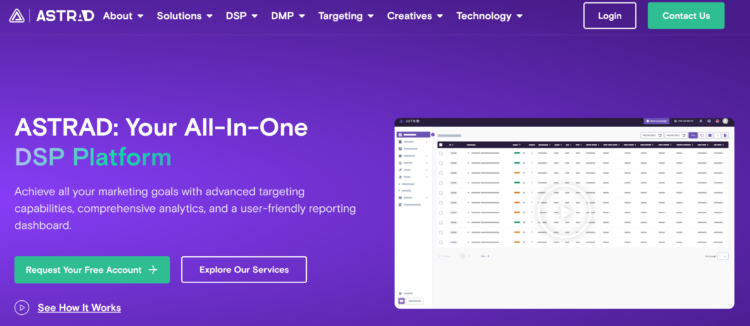
ASTRAD is an advanced cloud-based demand-side platform designed to empower users to effectively manage various aspects of their ad strategy.
This platform not only facilitates precise audience targeting but also provides comprehensive tools for campaign management, performance measurement, and more. With its innovative features and scalability, users can navigate through the intricacies of digital advertising, ensuring a holistic approach overall.
Overview
Daniel Macia founded ASTRAD in 2015. With a global reach, the platform empowers advertisers with managed, self-service, and white-label solutions.
Daniel’s leadership drives innovation, ensuring clients harness market-leading targeting capabilities and comprehensive consumer journey insights.
Services
ASTRAD provides its customers with the following services:
- Automates purchasing digital ad inventory across different platforms, including mobile, desktop, and video
- Offers precise targeting options such as demographics, geographic location, interests, and behavioral data to ensure the right ads reach the right users
- Allows advertisers to manage and optimize campaigns across different devices and channels from a unified platform
6. Zoomd
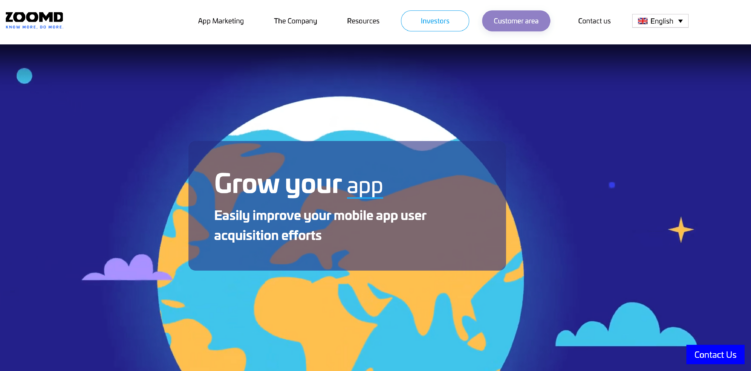
Zoomd is a digital marketing and user acquisition platform that provides a comprehensive suite of tools for advertisers, app developers, and publishers to optimize their online marketing campaigns. The platform focuses on user acquisition, retargeting, and performance marketing.
Overview
Zoomd was founded in 2012 by Amir Halevi and Omri Argaman. The company is based in Tel Aviv, Israel.
Zoomd caters to various industries, including eCommerce, gaming, finance, healthcare, and more, focusing on both B2B and B2C companies looking to scale up their user acquisition efforts.
Services
Zoomd provides its customers with the following services:
- Helps companies acquire high-quality users for mobile apps and websites by optimizing campaign performance across multiple traffic sources, including social media platforms and search engines
- Integrates with over 600 media sources like Google, Facebook, TikTok, and Instagram, allowing advertisers to manage campaigns across all these from a single dashboard
- Allows publishers to integrate an internal search engine into their apps or websites, enhancing user experience and engagement
7. Remerge

Remerge is an independent, top-tier mobile DSP that helps the world’s largest apps drive revenue and growth through programmatic advertising.
Remerge specializes in programmatic app-retargeting and has expanded its platform to offer privacy-centric user acquisition. Complemented by a fully managed service, Remerge is the trusted partner for leading apps across all major verticals including gaming, on-demand delivery, e-commerce, and finance.
Overview
Remerge was founded in 2014 when consumers began to shift their time and spend to mobile apps. Remerge’s five co-founders recognized the potential of in-app advertising and responded by developing the first in-app retargeting solution on the market, laying the foundations for today’s ever-growing mobile advertising industry.
The company has flourished into an international operation, with over 180 employees across the Americas, Europe, and Asia.
Services
Remerge provides its customers with the following services:
- Retargeting users who have already installed an app but have become inactive or less engaged. The platform uses personalized ads to re-engage these users and drive them back to the app
- Acquiring high-value users with its extensive scale and optimization algorithms, while complying with the latest user data privacy standards
- Leverages data analytics and machine learning to optimize ad campaigns. It uses insights from user behavior to adjust targeting strategies, bidding, and creative elements
8. Hitapps

Hitapps is a mobile app advertising and monetization platform that focuses on user acquisition and retargeting for mobile apps. It provides tools and solutions for app developers and marketers to acquire new users, re-engage existing ones, and optimize ad campaigns for better performance.
The platform helps app developers acquire new users through targeted advertising campaigns and utilizes various advertising channels and data-driven strategies to reach potential users who are likely to engage with your app.
Overview
Hitapps was founded by Gidi Kuper and Avi Zelikovitz in 2014. Kuper served as the company’s CEO. He brought significant experience in mobile marketing and app monetization to the role. Zelikovitz was the company’s CTO, focusing on tech and innovation within the platform.
Under their leadership, the platform developed its offerings in mobile app advertising and retargeting, focusing on helping developers and marketers optimize their user acquisition strategies.
Services
Hitapps provides its customers with the following services:
- Offers retargeting solutions to re-engage users who have previously interacted with an app but have become inactive
- Operates on a programmatic basis, using real-time bidding to buy ad inventory across various digital channels
- Leverages data analytics to optimize ad campaigns and analyzes user behavior and campaign performance to refine targeting strategies
9. Certis Media

Certis Media is a digital ads and media agency that specializes in programmatic advertising, performance marketing, and digital strategy. The company offers a range of services aimed at helping businesses optimize their mobile app digital marketing efforts.
The platform specifically leverages programmatic technology to automate the buying and placement of digital ads across various channels. This includes display ads, video ads, mobile ads, and more, using real-time bidding to target specific audiences.
Overview
Certis Media is an established player in the digital advertising industry. The company is based in Tel Aviv, Israel, but also has offices in the UK, Spain, and Berlin.
The company caters to a range of industries, including eCommerce, finance, tech, and healthcare, among others. The platform’s services are designed to meet the diverse needs of businesses looking to optimize their digital marketing efforts.
Services
Certis Media provides its customers with the following services:
- Focuses on performance-based marketing strategies, aiming to drive measurable results such as increased traffic, higher conversion rates, and improved return on investment
- Provides strategic consulting to help businesses develop effective digital marketing strategies. This includes insights into market trends, audience targeting, and campaign optimization
- Uses data analytics and machine learning to optimize ad campaigns and refine targeting and creative strategies to enhance results
10. Amazon DSP
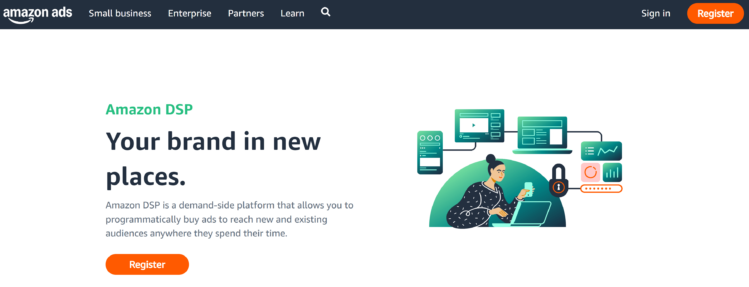
Amazon DSP is a programmatic ad platform that allows advertisers to purchase and manage digital ad inventory across various websites and apps. It helps businesses target their ads to specific audiences using Amazon’s data and machine learning capabilities.
Advertisers can reach potential customers on Amazon’s properties as well as on third-party sites and apps, optimizing their ad campaigns based on performance (and audience insights).
Overview
Amazon DSP was launched in 2012. It was introduced as part of Amazon’s broader ad strategy to offer advertisers more sophisticated tools for targeting and optimizing their digital advertising efforts.
Notable clients of Amazon DSP include Procter & Gamble, Unilever, L’Oréal, Sony, and Coca-Cola.
Services
Amazon DSP provides its customers with the following services:
- Leverages Amazon’s data to target ads based on user behavior, interests, and demographics
- Automates the buying and placement of digital ads across websites, apps, and Amazon’s many properties
- Tools to create, test, and optimize ad creatives to improve performance
11. Adform DSP

Adform DSP is a programmatic advertising platform that enables advertisers to purchase and manage digital ad inventory across various channels in real time.
Adform DSP offers a range of features and compelling capabilities, including one that allows advertisers to target specific audiences based on demographics, interests, and behavior using data from multiple different sources.
Overview
Adform was founded in 2002 by Kris Hoet and Søren Jørgensen. It began as a digital advertising tech company, and its DSP is one of the key components of its broader suite of programmatic advertising solutions.
The platform has since grown to become a major player in the ad tech industry, offering a range of tools for digital advertising and data management.
Services
Adform DSP provides its customers with the following services:
- Facilitates the automated purchase of ad impressions through real-time bidding auctions
- Supports ad placements across multiple formats and channels, such as display, video, mobile, and social media
- Provides tools for creating, optimizing, and managing ad campaigns, including advanced targeting and bidding strategies
12. Bidease
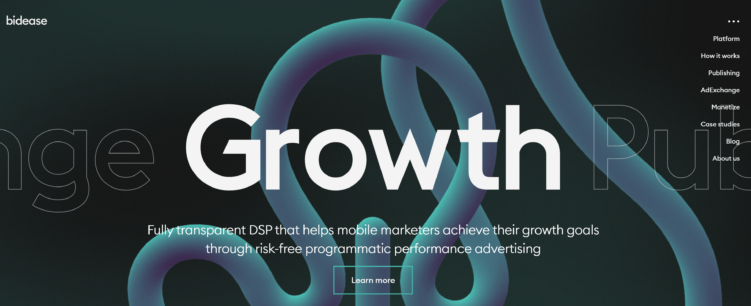
Bidease is a mobile ad platform that specializes in programmatic ad buying and optimization. It provides tools for advertisers to purchase and manage mobile ad inventory across various channels, including in-app and mobile web.
The platform automates the buying and selling of mobile ad inventory through real-time bidding as well as delivers detailed analytics and reporting to track campaign effectiveness and measure key metrics.
Overview
Bidease was founded in 2015 by Amit Dey, Sanket Saurav, and Rajiv Awasthi. The company focuses on providing programmatic advertising solutions for mobile and digital media.
Bidease works with a range of clients, including various brands and app developers looking to optimize their mobile ad strategies.
Services
Bidease provides its customers with the following services:
- Offers sophisticated targeting options based on user behavior, demographics, and interests
- Provides tools to optimize ad campaigns for better performance and ROI
- Delivers comprehensive analytics and reporting to track campaign effectiveness and measure critical metrics
13. Epom Market

Epom Market is a programmatic ad platform that specializes in ad tech solutions. The platform provides a marketplace for buying and selling ad inventory through real-time bidding and implements measures to ensure ad traffic quality as well as protect against ad fraud and brand safety issues.
The platform offers detailed reporting and analytics to monitor campaign performance, optimize strategies, and track key performance indicators.
Overview
Epom was founded in 2010 by Yevhen Kutsenko and Ihor Zhovkva. The company initially started as an ad server and then later expanded its offerings to include programmatic advertising solutions like Epom Market.
The ad-serving platform supports over 30 ad formats and provides advanced analytics and reporting capabilities. It serves a host of clients across multiple different industries.
Services
Epom Market provides its customers with the following services:
- Facilitates automated ad buying and selling through real-time bidding, allowing for efficient and scalable ad transactions
- Offers targeting options based on demographics, interests, behavior, and geographic location to reach the desired audience effectively
- Supports multiple ad formats and channels, including display, mobile, video, and native ads
What are the different types of demand-side platforms?
In order to understand the inner workings of demand-side platforms, their related components, SSPs and DMPs, and how they function collectively to create more efficient advertising processes, let’s first discuss what programmatic advertising is.
Programmatic advertising
Did you know, programmatic advertising is an epic business, with data predicting its spend to hit $48bn in 2018, and rising to $69bn by 2020?
So, we know that this form of marketing is here to stay – for a long time.
Programmatic advertising describes the entire process of buying and selling of adverts, which, in today’s digital landscape, happens in the form of online advertising.
So instead of spending countless hours contacting several publishers offering to advertise, this marketing automation management tool allows advertisers to receive the best results through digitized audience targeting and real-time bidding.
In essence, through the concept of programmatic advertising, marketers are able to automate purchasing and efficient managing of their digital ad campaigns, which includes media buying, ad placements, performance tracking and campaign optimization.
Remember we mentioned SSPs and DMPs earlier in the guide? Well these components all belong to the programmatic advertising process.
Now, you may think we are throwing all kinds of terminology at you at this point. Let’s dive straight into these definitions so you get a better picture of how they work together.
Mobile demand-side platform
This category of demand-side platforms is one you really want to know about, as mobile platforms are growing to be marketers’ go-to tool for generating top level ad campaigns.
Mobile DSPs are the next step in the evolution of advertising networks. They are designed to tackle many challenges of mobile advertising. These include precise targeting and the need to deliver a message that is relevant to users and does not ruin their experience of using a mobile app or visiting a website.
Recent advances in technology now enable mobile DSPs to track smartphone and tablet models, operating systems, screen size, location and more.
The past couple years have seen a huge shift towards mobile programmatic buying, as advertisers begin to reap the rewards of sophisticated targeting and measurement capabilities.
Video demand-side platform
Just when you didn’t think demand-side platforms could get any more complex, there is video DSP.
For the last several years, video has been the fastest growing medium for advertising, with companies like Facebook, Google, Twitter, Snapchat, and TikTok leading the field.
This growth led to the development of multiple ad formats in order to meet requirements of both desktop and mobile platforms. For example, vertical video ads on Snapchat are radically different from pre-roll, mid-roll and post-roll video ads on Google’s YouTube.
How does demand-side platform advertising work?
So how do demand-side platforms tie into the infrastructure of programmatic advertising and marketing automation?
And to make matters even more complex, how does DSP advertising work in conjunction with SSPs and DMPs?
Think of demand-side platforms as a software, a system if you will, that buyers in the online advertising inventory realm can use to manage not one but multiple ad and data exchanges as well as their bids through one interface.
Everything from purchasing, analyzing to managing ads across many networks take place within DSPs.
Demand-side platforms generally refer to the buying of ads, hence providing demand for advertising inventory.
Supply-side platform (SSP)
Supply-side platform (SSP) should then be the opposite of a DSP, right? Correct.
SSPs allow publishers to sell advertising in the form of automated marketing. While demand-side platforms let marketers buy, SSPs therefore let publishers sell their ad inventory across ad exchanges.
Just as demand-side platforms guarantee the best value and offer of ads to marketers, SSPs ensure the best possible offer to publishers, allowing them to maximize revenue.
They are both part of the same ad marketplace, they just operate on opposite ends of the transaction.
What is a data management platform (DMP)?
Demand-side platforms provide advertisers with essential information that informs which advertising is worth buying from publishers. In other words, they provide data that defines various audience segments and informs ultimate ad buying decisions.
So, where do demand-side platforms retrieve this data from? Yup, you guessed that right: from a data management platform (DMP).
DMPs are used to store and utilize crucial data more effectively, to ensure that advertisers include elements to their digital ad campaigns that are truly relevant to the consumer.
Marketers can store all of their carefully researched data in one platform – that is the DMP – to which they can always refer back to when running an ad campaign.
Real-time bidding
Let’s go back to the term ‘real-time bidding’ we threw at you earlier.
So you have now got the valuable data from your DMP and have decided on an ad to purchase. In this case, the SSP will communicate with the demand-side platform the details of an impression. Based on the value of this impression, your demand-side platform will likely set a higher bid for said impression.
Whether or not you win the bid you placed accordingly will depend on how valuable this impression is to other marketers and their DSP as well as their budget for their bid.
This bidding happens in real-time and is automated by the SSP, DSP and the ad exchange between advertisers and publishers.
In the process of real-time bidding, you specify your target audience for your ads and how much you are willing to pay. A so-called bidding war takes place between you and other fellow advertisers who are targeting the same audience.
As the page loads, the algorithm automatically examines browsing history, date and time, IP address, allowing it to display the most relevant ad. The DSP and SSP meet halfway, referring to data from the DMP, and the algorithm finds a match.
Whichever advertiser bids the highest for that particular ad and impression earns the ad placement.
The ad gets served and, if it’s your lucky day, you have your ad on a relevant blog site attracting the right consumer.

Source: Instapage
Why should I use demand-side platforms?
The value of the best demand-side platforms lies in its transparency. It is the platform’s capacity to empower advertisers to manage multiple ads, bid in real-time as well as efficiently track and optimize ad performance that makes it worth the investment.
Using a demand-side platform comes with many advantages: The automated platform allows marketers using a mobile DSP in particular, to buy mobile ad inventory through a single interface.
Demand-side platforms enable a quick and easy set up of ad campaigns and management, so you don’t have to waste countless of valuable hours on the slow process of manually contacting hundreds of publishers directly.
And it does not end just there.
Advertisers can see the market rate for every impression they buy, control the ad exchanges they want to buy and realistically decide how much they want to bid.
Not only do demand-side platforms make campaign creation and management simpler, but they also make sure you get your money’s worth from your placement bid, securing a solid foundation for those conversions to skyrocket.
But let’s not get too ahead of ourselves just yet.
While we can list several advantages of using a demand-side platform, we also don’t want to sound like a pro-demand-side platform guide.
We promised a detailed guide so you can make an informed decision on how to choose the best demand-side platforms. And that is exactly what we will give you.
Pros & cons of demand-side platforms
Before you go investing loads in a demand-side platform software, take a quick look at this pros & cons list to get an unbiased overview of the advertising tool:
Pros:
- Transparency
- Time efficiency
- Precise targeting
- Best value
- Performance tracking
Cons:
- Hidden costs
- Ad fraud risks
- Complexity
Pros
Transparency
Most DSPs offer full transparency of what types of ad placements you are buying, tracking substandard offers and looking out for any fraud ads.
Time efficiency
If you commonly manage ad campaigns across more than one network, DSP dashboards ensure a great overview and easy management of everything, which can save a lot of valuable time.
Precise targeting
Thanks to DMPs, marketers are able to gather valuable user data. The more data, the more precise the targeting. And accurate targeting allows for more personalized ads and messages, resulting in higher conversions.
Best value
Not only do DSPs give you the best suitable ad placement, but they also allow you to buy impressions on platforms with quality audiences. With demand-side platforms you don’t have to worry about wasting your money on empty traffic.
Performance tracking
You can analyze ad placements and their performance directly on the demand-side platform. This allows you to spot any errors immediately and fix it without wasting your budget.
Cons
Hidden costs
The process may be budget-friendly, but a lot of demand-side platforms with various cost models can be rather pricey as a whole. Some may require monthly fees, or even include hidden costs, increasing your ad spend overall.
But we will expand on this, including the complexities of a demand-side platform in the next part of the guide.
Ad fraud risks
When using such an automation marketing tool, there is always a risk in buying fraudulent impressions, and not all demand-side platforms have sufficient ad fraud detection features in place.
So you want to be aware of any potential financial losses that may result from this.
How do I choose the best demand-side platforms?
We understand the struggle in deciding which demand-side platform to go with. You need to be more familiar with the programmatic advertising concept in order to choose the right one for your mobile app.
Where should you start in the selection process?
When choosing a demand-side platform, here are some key questions to consider:
- Does it include app and mobile web inventory, or both?
- Which third-party data integrations does it offer?
- What targeting criteria is available?
- How sophisticated are its algorithms?
Once you have outlined your marketing objectives for your business, and how you want to achieve them with programmatic advertising, the questions above are a useful guideline to help navigate your selection process in recognizing and choosing the best DSP.
But let’s dissect the questions and elaborate on them a little more.
Inventory
The type of inventory the demand-side platform offers can be a good indicator of whether or not the platform is suitable for your campaigns.
In general terms, you want to choose a demand-side platform with an inventory that includes video, mobile, display and tablet placements. This means they offer a diverse ad creative, allowing you to reach a wider audience.
Reach
A demand-side platform’s reach is as important as inventory quality. So make sure to look for a DSP provider that has connections with high quality exchanges as well as access to global traffic.
That’s why it can be also useful to ask about their traffic sources when choosing your demand-side platform.
Efficiency
A demand-side platform with efficient and flexible tools and technology is key to running successful ad campaigns.
You want a platform that is easy to navigate through, accurate with real-time reporting, simple to set up and manage your campaigns, and one that offers a variety of targeting options.
Another deciding factor is a demand-side platform’s technology.
Is the demand-side platform leveraging and continuously evolving its technology to improve targeting, bidding and overall functionality methods? The answer will give you a clear direction for your decision.
If its tools are complicated and more complex, going for that particular DSP may result in difficulties surrounding campaign setup and management, on which you really don’t want to waste your valuable time and resources.
Cost model
While every demand-side platform will charge for its services, the costs will vary significantly.
For most demand-side platforms, their fee is included within an advertiser’s CPM bid. However, some providers also slide a sneaky hidden fee into the CPM.
Many demand-side platforms also request a monthly or annual spend, or even a commitment agreement. So while management and tech fees are standard across demand-side platforms, you want to make sure you are aware of how much of your spend is going towards maintenance of the platform and ad exchange fees to avoid long-term overspend.
It is also important to know what a DSP’s minimum fee is to avoid any surprise expenses along the way when you do eventually partner with them.
Available data
You know how much value data can hold when running ad campaigns. The more relevant data you have access to, the better you can optimize real-time bidding campaigns, expanding reach for a wider audience that are most-likely to convert.
Analytics
Having access to accurate, real-time reports are integral features of a good demand-side platform. Like we discussed earlier, you may require particular data and reporting to identify further enhancements according to your unique marketing goals.
Remember, customized report builders are not always included in standard demand-side platform. So, make sure to choose a DSP provider with those capabilities that will allow room for accurate optimizations and guaranteed campaign success.
Support
Lastly, you should definitely look for a demand-side platform that provides a great level of support, especially when you will be setting up your first ad campaigns. While your experienced team may be well equipped to work independently, technical assistance directly from the platforms is always helpful.
Find out whether your demand-side platform has a limit to their support or if any costs are associated with their offer.
Choose the best of the top demand-side platform
The bottom line to choosing the best demand-side platform for your unique marketing goals is to get full transparency into each demand-side platform provider before partnering with them.
Understanding the ins and outs of how demand-side platforms operate should avoid any disappointments and errors in the future that can hurt your campaigns long term.
To help you to make an informed decision of choosing the right demand-side platform for desktop and mobile ad campaigns, we’ve put together a list of the top demand-side platforms and their best features.
Along with the guide, the list should hopefully assist you in your selection process to ace programmatic advertising with this revolutionary automated tool.


